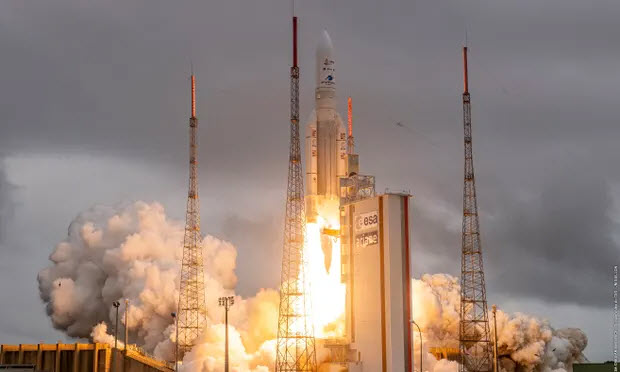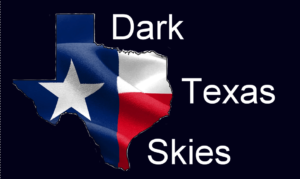- 701 W US-90, Marathon, TX 79842
- Marathon Sky Park
james webb latest
(and some from the Hubble Telescope)
Click on the sample videos or pictures below of the phenomenal celestial objects that the James Webb Space Telescope (JWST) has taken.
LIFT-OFF
The James Webb Space Telescope was lunched on December 25, 2021 atop a huge Ariane 5 rocket. Once in orbit, the telescope’s solar arrays were unfurled and the observatory began its million-mile voyage to its final destination, a region of deep space where it can be kept stationary in roughly the same position in the sky. The James Webb Space Telescope was named after a former NASA administrator. The JWST is NASA’s largest and most powerful space science telescope that has an approximate 6.5 meter primary mirror
What Is Happening to Betelgeuse?
IC 5332
A spectacular image of a spiral galaxy in unprecedented detail that is about 30 million light-years from Earth in the Sculptor Constellation. This is due to observations from the Mid-InfraRed Instrument (MIRI), which is mounted on the James Webb Space Telescope.
Posted September 27, 2022
Neptune
The James Webb Space Telescope is showing its capabilities closer to Earth in our solar system with its first image of Neptune. The scope has captured the clearest view of this peculiar planet’s rings in more than 30 years and also reveals the ice giant in a whole new light.
Posted September 21, 2022
Cartwheel Galaxy
A journey through space to reveal the Cartwheel Galaxy that is about 490 light-years from Earth in the Sculptor Constellation. The galaxy and its companion galaxies is a composite from Webb’s Near-Infrared Camera (NIRCam) and Mid-Infrared Instrument (MIRI).
Posted August 8, 2022
Zooming in on the Andromeda Galaxy
This video begins with a ground-based view of the night sky, before zooming in on a Hubble image of the Andromeda galaxy — otherwise known as M31.
The new Hubble image of the galaxy is the biggest Hubble image ever released and shows over 100 million stars and thousands of star clusters embedded in a section of the galaxy’s pancake-shaped disc stretching across over 40 000 light-years.
More information and download options: http://www.spacetelescope.org/videos/…
Credit: NASA, ESA, Digitized Sky Survey 2, N. Risinger (Skysurvey.org), J. Dalcanton (University of Washington, USA), B. F. Williams (University of Washington, USA), L. C. Johnson (University of Washington, USA), the PHAT team, and R. Gendler.
By combining data from the NASA/ESA/CSA James Webb Space Telescope and the NASA/ESA Hubble Space Telescope, researchers were able to trace light that was emitted by the large white elliptical galaxy at left through the spiral galaxy at right and identify the effects of interstellar dust in the spiral galaxy. This image of galaxy pair VV 191 includes near-infrared light from Webb, and ultraviolet and visible light from Hubble.
Credit: NASA, ESA, CSA, Rogier Windhorst (ASU), William Keel (University of Alabama), Stuart Wyithe (University of Melbourne), JWST PEARLS Team, Alyssa Pagan (STScI), N. Bartmann Music: Stellardrone – Twilight
This video features a new image from the NASA/ESA/CSA James Webb Space Telescope’s Near-InfraRed Camera (NIRCam), showcasing the low-mass star forming region Chameleon I.
An international team of astronomers has reported the discovery of diverse ices in the darkest, coldest regions of a molecular cloud measured to date by studying this region. This result allows astronomers to examine the simple icy molecules that will be incorporated into future exoplanets, while opening a new window on the origin of more complex molecules that are the first step in the creation of the building blocks of life.
This research forms part of the Ice Age project, one of Webb’s 13 Early Release Science programs, which has studied a dust ridge in the centre of the Chameleon I molecular cloud.
Credit: NASA, ESA, CSA, Rogier Windhorst (ASU), William Keel (University of Alabama), Stuart Wyithe (University of Melbourne), JWST PEARLS Team, Alyssa Pagan (STScI), N. Bartmann Music: Stellardrone – Twilight
Cosmic Contortions
A massive galaxy cluster in the constellation Cetus dominates the centre of this image from the NASA/ESA Hubble Space Telescope. This image is populated with a serene collection of elliptical and spiral galaxies, but galaxies surrounding the central cluster — which is named SPT-CL J0019-2026 — appear stretched into bright arcs, as if distorted by a gargantuan magnifying glass. This cosmic contortion is called gravitational lensing, and it occurs when a massive object like a galaxy cluster has a sufficiently powerful gravitational field to distort and magnify the light from background objects.
Credit:
ESA/Hubble & NASA, H. Ebeling
Music: Stellardone – Billions and Billions
License: Creative Commons Attribution license (reuse allowed)
Zoom: seeing triple
This video from the NASA/ESA/CSA James Webb Space Telescope takes the viewer on a journey through space to the location of the massive galaxy cluster RX J2129. Due to Gravitational lensing, this observation contains three different images of the same supernova-hosting galaxy, which you can see in closer detail here. Gravitational lensing occurs when a massive celestial body causes a sufficient curvature of spacetime to bend the path of light travelling past or through it, almost like a vast lens. In this case, the lens is the galaxy cluster RX J2129, located around 3.2 billion light-years from Earth in the constellation Aquarius.
More information and download options: http://esawebb.org/videos/potm2302b/
Credit: ESA/Webb, NASA & CSA, P. Kelly, Dark Energy Survey/DOE/FNAL/NOIRLab/NSF/AURA, DSS, N. Bartmann (ESA/Webb), E. Slawik, N. Risinger, D. de Martin (ESA/Webb), M. Zamani (ESA/Webb) Music: Tonelabs – The Red North (www.tonelabs.com)
Zoom: galactic seascape
A jellyfish galaxy with trailing tentacles of stars hangs in inky blackness in this image from the NASA/ESA Hubble Space Telescope. As Jellyfish galaxies move through intergalactic space they are slowly stripped of gas, which trails behind the galaxy in tendrils illuminated by clumps of star formation. These blue tendrils are visible drifting below the core of this galaxy, and give it its jellyfish-like appearance. This particular jellyfish galaxy — known as JO201 — lies in the constellation Cetus, which is named after a sea monster from ancient Greek mythology.
More information and download options: http://esahubble.org/videos/potw2309a/
Credit: ESA/Hubble & NASA, M. Gullieuszik
Music: Stellardrone – Billions and Billions




